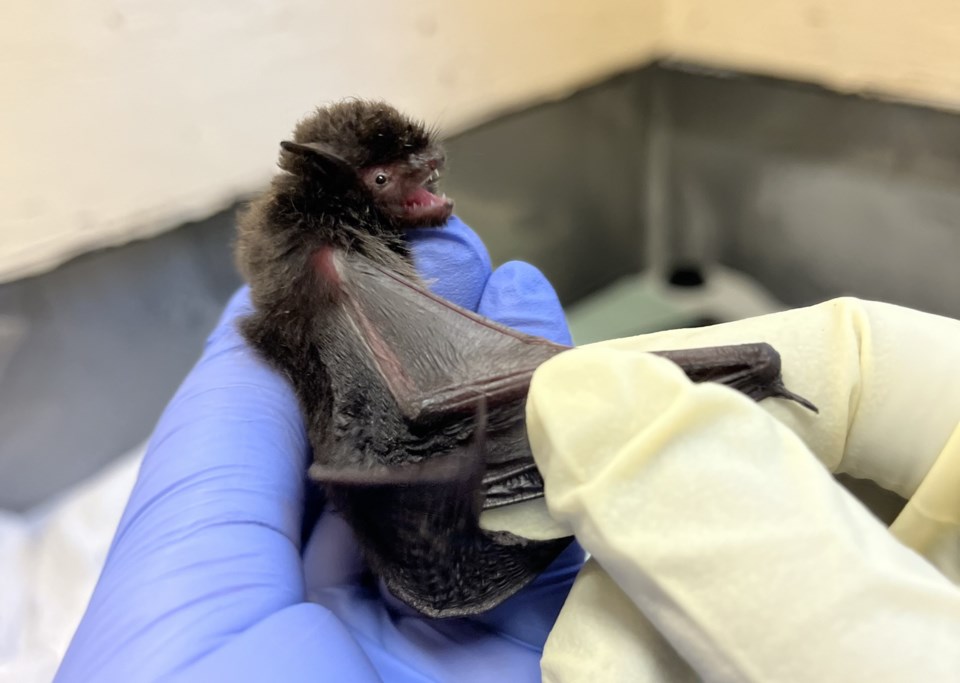Over the course of July and August, 29 bat patients were admitted to Wildlife Rescue and the Burnaby-based organization saw a significant increase in the number of bat-related reports. Most of these cases were about grounded bats, bats caught in sticky traps, and bats roosting in unusual places during the day.
As September hits, Jackie McQuillan, Wildlife Rescue’s support centre manager, said it’s not uncommon to see an increase in bat activity. “Many juvenile bats are beginning to learn how to fly. This means bats can be found in unexpected locations, such as entryways, on the sides of buildings or sometimes even on the ground,” McQuillan explains.
If a bat is found, whether they are injured, sick, or roosting, it’s important to remember never to touch them with bare hands.
“Bats are a rabies vector species in B.C., although the percentage of bats who have the disease is 0.5%, it’s still crucial not to touch them,” advises Aimee Mitchell, Fraser Valley and Upper Sunshine Coast Community Bat Program coordinator. Rabies can be fatal, however, contracting the disease from bats is incredibly rare. For more information about rabies visit the BCCDC's website.
There are 15 bat species in the province, each playing a vital role within the ecosystem. These small nocturnal mammals eat thousands of insects, like mosquitoes and moths, every night. The vast amount of pest insects they consume is essential for protecting forests and agriculture.
If you encounter a bat that is exhibiting unusual behaviour or appears to be injured, the situation should be reported to Wildlife Rescue. The team will provide information on the best course of action, and if needed, guidance on how to properly contain the bat.
In any case, BC Bats recommends that “if you are to move or contain the bat, it’s best to do so with the proper protective equipment, meaning wear thick gloves, protective glasses, long-sleeved clothing, a mask. And closely follow instructions given on capturing the bat.”
If there has been direct contact with a bat, your local health authority should be contacted. If a pet has or may have been in contact with a bat, a vet should be consulted for further instruction.
Half the bat species in British Columbia are considered species at risk, meaning they are vulnerable or threatened. Habitat loss, pet predation, wind farms, and diseases like white-nose syndrome (WNS) are putting significant pressure on local bat populations.
WNS is a disease that has been spreading across the U.S. and Canada, killing millions of bats. The fungus attacks bats during hibernation and is easily spread through a cave or mine. Though the disease has not been reported in B.C. thus far, it’s important to report diseased bats to BC Bats or your local bat community program for disease monitoring.
You can support your local bat population by putting up bat boxes which provide them with a natural area to roost in.
To report a bat sighting or for more information on removing bats from buildings, please visit bcbats.ca.
This article was written by Elin Molenaar, the communications coordinator at Wildlife Rescue Association.



